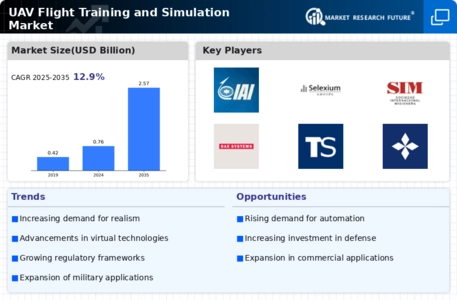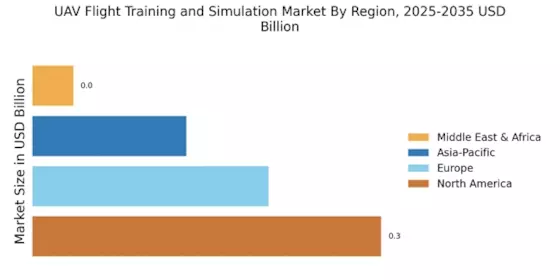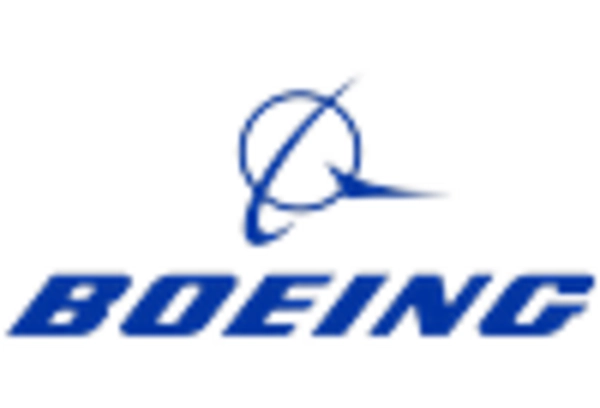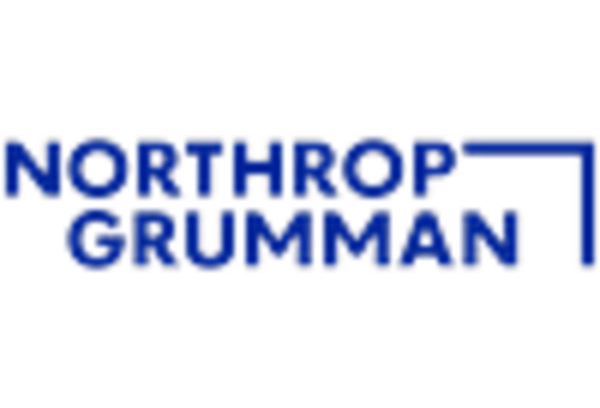Rising Demand for UAV Operators
The UAV Flight Training and Simulation Market is experiencing a notable increase in demand for skilled UAV operators. As various sectors, including agriculture, logistics, and surveillance, increasingly adopt UAV technology, the need for trained personnel becomes paramount. According to recent data, the number of commercial drone operators is projected to grow significantly, with estimates suggesting a potential increase of over 50% in the next five years. This surge necessitates comprehensive training programs that can effectively prepare individuals for the complexities of UAV operations. Consequently, training organizations are expanding their offerings, leading to a robust market for UAV flight training and simulation solutions. The emphasis on practical, hands-on training, coupled with simulation technologies, is likely to enhance the skill sets of operators, thereby driving the market forward.
Growing Commercial Applications of UAVs
The UAV Flight Training and Simulation Market is witnessing growth due to the expanding commercial applications of UAVs across various sectors. Industries such as agriculture, construction, and real estate are increasingly utilizing UAVs for tasks such as crop monitoring, site surveying, and aerial photography. This diversification of UAV applications is driving the need for trained operators who can effectively manage these technologies. Market analysis suggests that the commercial UAV sector could see a growth rate of approximately 25% over the next few years. As businesses recognize the operational efficiencies and cost savings associated with UAV usage, the demand for training programs that equip individuals with the necessary skills is likely to rise. This trend is expected to bolster the UAV flight training and simulation market, as organizations seek to develop a skilled workforce capable of leveraging UAV technologies.
Technological Advancements in Simulation
Technological advancements are playing a crucial role in shaping the UAV Flight Training and Simulation Market. Innovations in simulation technologies, such as virtual reality and augmented reality, are enhancing the training experience for UAV operators. These technologies provide immersive environments that allow trainees to practice in realistic scenarios without the risks associated with actual flight. The market for UAV simulation is projected to grow at a compound annual growth rate of approximately 15% over the next few years, driven by the increasing adoption of these advanced training tools. Furthermore, the integration of artificial intelligence into simulation platforms is expected to personalize training experiences, adapting to the individual needs of trainees. This evolution in training methodologies not only improves the effectiveness of training programs but also contributes to the overall growth of the UAV flight training and simulation market.
Increased Investment in Defense and Security
The UAV Flight Training and Simulation Market is significantly influenced by increased investment in defense and security sectors. Governments worldwide are recognizing the strategic advantages offered by UAVs in military operations, surveillance, and reconnaissance. As a result, defense budgets are being allocated to enhance UAV capabilities, which includes investing in training programs for operators. Recent reports indicate that defense spending on UAV technology is expected to rise by over 20% in the coming years. This trend underscores the necessity for comprehensive training solutions that can prepare personnel for advanced UAV operations. Consequently, the demand for specialized flight training and simulation programs is likely to escalate, as military and security organizations seek to ensure that their operators are proficient in utilizing these sophisticated systems.
Regulatory Frameworks and Compliance Requirements
The UAV Flight Training and Simulation Market is increasingly shaped by evolving regulatory frameworks and compliance requirements. As UAV operations become more prevalent, regulatory bodies are establishing guidelines to ensure safety and accountability in the airspace. These regulations often mandate specific training and certification for UAV operators, thereby creating a structured environment for the training market. Recent developments indicate that compliance with these regulations is becoming a critical factor for organizations looking to operate UAVs legally. Consequently, training providers are adapting their programs to meet these regulatory standards, which is likely to drive demand for comprehensive flight training and simulation solutions. The emphasis on regulatory compliance not only enhances safety but also fosters a more professional approach to UAV operations, further propelling the growth of the UAV flight training and simulation market.


















Leave a Comment